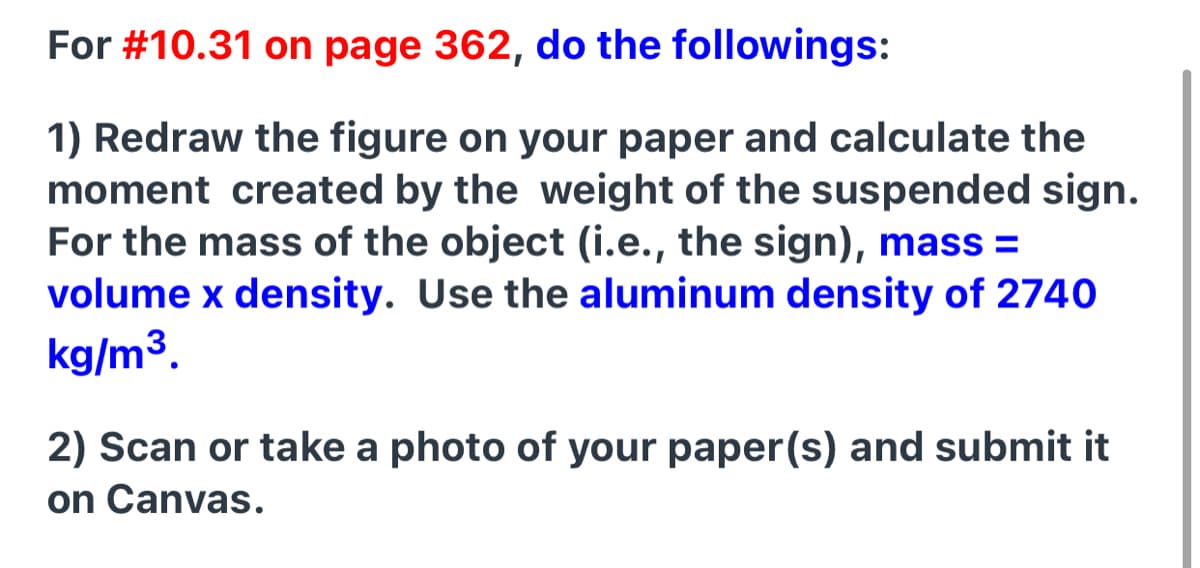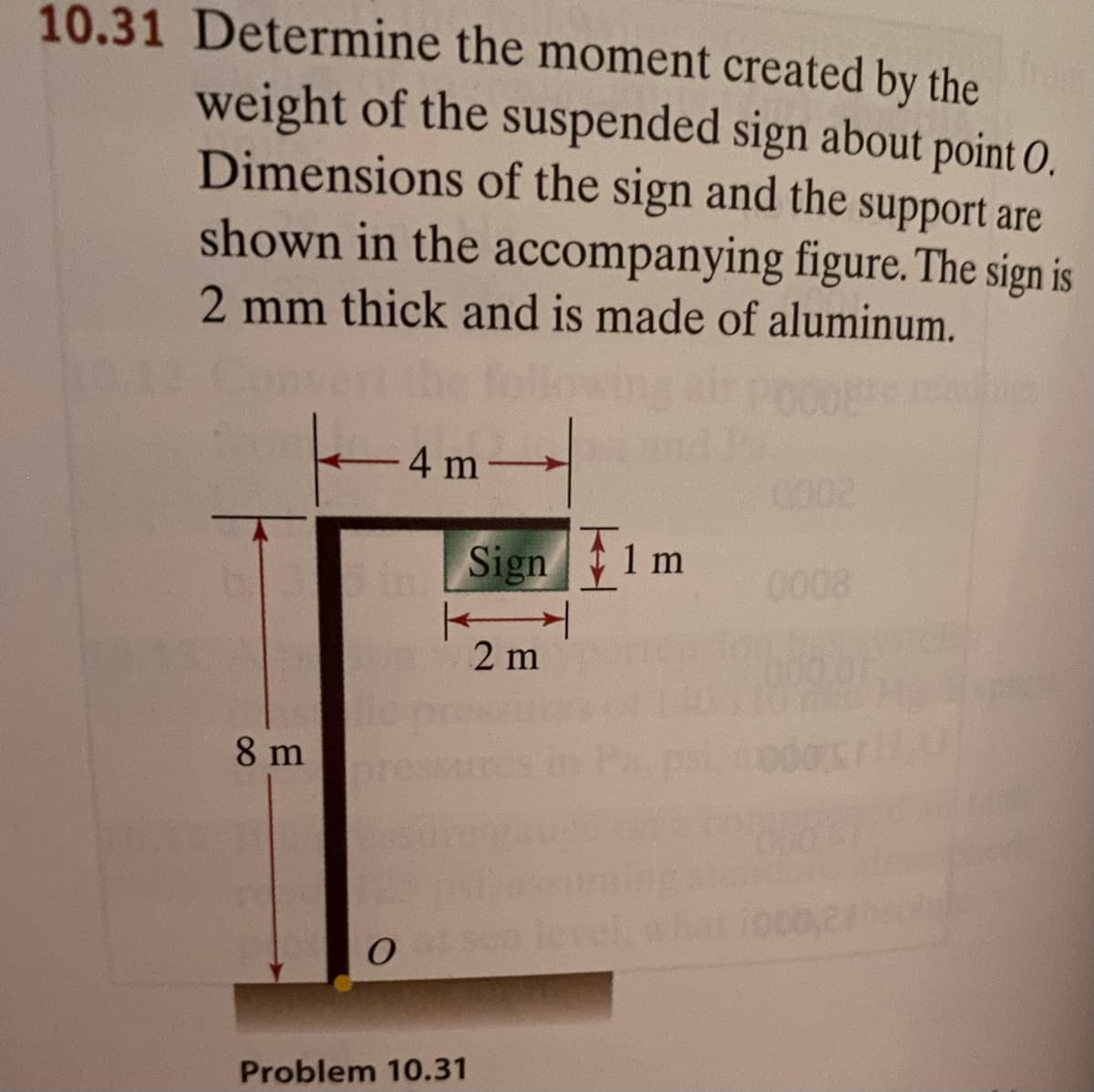1) Redraw the figure on your paper and calculate the moment created by the weight of the suspended sign. For the mass of the object (i.e., the sign), mass = volume x density. Use the aluminum density of 2740 kg/m3.
1) Redraw the figure on your paper and calculate the moment created by the weight of the suspended sign. For the mass of the object (i.e., the sign), mass = volume x density. Use the aluminum density of 2740 kg/m3.
Principles of Physics: A Calculus-Based Text
5th Edition
ISBN:9781133104261
Author:Raymond A. Serway, John W. Jewett
Publisher:Raymond A. Serway, John W. Jewett
Chapter10: Rotational Motion
Section: Chapter Questions
Problem 29P
Related questions
Concept explainers
Topic Video
Question
I’ve asked this question already but the explanation didn’t make any sense
Could you explain it in an easier way? ☹️

Transcribed Image Text:For #10.31 on page 362, do the followings:
1) Redraw the figure on your paper and calculate the
moment created by the weight of the suspended sign.
For the mass of the object (i.e., the sign), mass =
volume x density. Use the aluminum density of 2740
kg/m3.
2) Scan or take a photo of your paper(s) and submit it
on Canvas.

Transcribed Image Text:10.31 Determine the moment created by the
weight of the suspended sign about point O.
Dimensions of the sign and the support are
shown in the accompanying figure. The sign is
2 mm thick and is made of aluminum.
4 m
0002
in
Sign 1 m
0008
2 m
8 m
pr
leve
Problem 10.31
Expert Solution
This question has been solved!
Explore an expertly crafted, step-by-step solution for a thorough understanding of key concepts.
This is a popular solution!
Trending now
This is a popular solution!
Step by step
Solved in 2 steps with 1 images

Knowledge Booster
Learn more about
Need a deep-dive on the concept behind this application? Look no further. Learn more about this topic, physics and related others by exploring similar questions and additional content below.Recommended textbooks for you

Principles of Physics: A Calculus-Based Text
Physics
ISBN:
9781133104261
Author:
Raymond A. Serway, John W. Jewett
Publisher:
Cengage Learning

Physics for Scientists and Engineers: Foundations…
Physics
ISBN:
9781133939146
Author:
Katz, Debora M.
Publisher:
Cengage Learning

Physics for Scientists and Engineers, Technology …
Physics
ISBN:
9781305116399
Author:
Raymond A. Serway, John W. Jewett
Publisher:
Cengage Learning

Principles of Physics: A Calculus-Based Text
Physics
ISBN:
9781133104261
Author:
Raymond A. Serway, John W. Jewett
Publisher:
Cengage Learning

Physics for Scientists and Engineers: Foundations…
Physics
ISBN:
9781133939146
Author:
Katz, Debora M.
Publisher:
Cengage Learning

Physics for Scientists and Engineers, Technology …
Physics
ISBN:
9781305116399
Author:
Raymond A. Serway, John W. Jewett
Publisher:
Cengage Learning

College Physics
Physics
ISBN:
9781938168000
Author:
Paul Peter Urone, Roger Hinrichs
Publisher:
OpenStax College

Glencoe Physics: Principles and Problems, Student…
Physics
ISBN:
9780078807213
Author:
Paul W. Zitzewitz
Publisher:
Glencoe/McGraw-Hill

Physics for Scientists and Engineers with Modern …
Physics
ISBN:
9781337553292
Author:
Raymond A. Serway, John W. Jewett
Publisher:
Cengage Learning